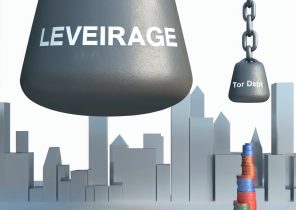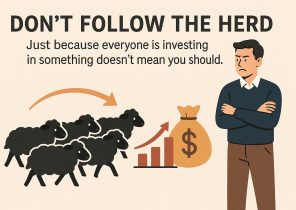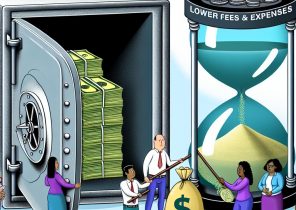Understanding Dividend Reinvestment
Reinvesting dividends involves using the cash dividends from investments like stocks and mutual funds to purchase more shares of the same financial asset. This strategy harnesses the power of compound interest to potentially enhance long-term returns. Instead of cashing out dividends, the money is put back into the investment, acquiring additional shares.
The Mechanism of Dividend Reinvestment
When an investor opts to reinvest dividends, each dividend payout is automatically used to buy more shares. These additional shares will themselves generate dividends in the future, thereby increasing the total number of shares over time. Eventually, this results in a greater cumulative return due to the expanded shareholding base.
Benefits of Reinvesting Dividends
The main advantage of this strategy is the effect of compounding. By continuously reinvesting dividends, investors allow their investments to grow exponentially. This approach enables investors to profit from both regular stock price appreciation and increased share quantities.
Consider an investor who owns shares of a blue-chip stock paying a 3% annual dividend yield. By reinvesting dividends, the investor not only benefits from any incremental rise in the stock price but also grows their share count without additional capital investment. Over time, this improves the portfolio’s growth potential.
Investing in a dividend reinvestment strategy can further diversify an investor’s portfolio. As the reinvested dividends are used to purchase additional shares, this often leads to a broader base of shareholdings. The increased shareholding not only contributes to potential increased earnings but also spreads out risk. While diversification is generally aimed at mitigating risk, in the context of dividend reinvestment, it serves as a byproduct that strengthens the investment profile.
Automation via Dividend Reinvestment Plans (DRIPs)
Many investors utilize Dividend Reinvestment Plans (DRIPs) to automate the process. Offered by many brokerages and some companies, DRIPs automatically convert dividends into additional stock shares, often at no extra cost or at a discounted price. This ease of automation fosters disciplined investing.
Automating the reinvestment process through DRIPs also reduces the emotional strain of investing. Reinvestment automation takes away the need for decision-making each time dividends are paid out. Investors often experience the impulse to spend their cash dividends, but DRIPs curb such instincts by locking in the reinvestment, which is crucial for disciplined, long-term investing.
Considerations
While advantageous for long-term growth, dividend reinvestment may not be suitable for everyone. Investors who need regular income from dividends may prefer to receive cash payouts. Additionally, it’s essential to keep track of tax liabilities, as dividends are typically taxable when received, even if reinvested. Investors should consult with a financial advisor to align their strategy with their financial goals.
Reinvesting dividends can significantly augment an investor’s wealth-building strategy by bolstering asset growth through compounding. For those focused on long-term growth, it represents a practical and often automated method to maximize investment returns.
Detailed Considerations and Challenges
Understanding the potential drawbacks of dividend reinvestment is vital for investors who are deciding whether to adopt this strategy. These challenges are not insurmountable but require careful thought and planning.
Tax Implications
One of the primary considerations is tax liability. While reinvesting may seem straightforward and beneficial, dividends are still taxable. When dividends are paid out by a company, they are subject to tax, whether the investor chooses to take them as cash or reinvest them. This can complicate tax reporting and requires careful management of one’s investment portfolio to manage tax obligations effectively.
Income Needs
Not every investor focuses solely on growth. Many investors, especially retirees or those with significant financial responsibilities, may need immediate cash flow from their investments. For these investors, taking dividends as cash is more beneficial than reinvesting them, as it aligns with their need for immediate financial support.
Market Volatility
Market conditions also impact the effectiveness of dividend reinvestment strategies. In highly volatile markets, reinvesting at higher share prices could lead to purchasing fewer shares with each dividend. Investors need to analyze market trends and consider whether reinvesting during certain market conditions is advisable. Timing, however, can be complex and challenging, often leading investors to simply rely on a consistent reinvestment strategy to balance out these fluctuations.
Balancing Reinvestment with Portfolio Objectives
Another critical aspect is ensuring that the reinvestment of dividends aligns with the overall objectives and diversification strategy of a portfolio. As an investor’s portfolio grows and evolves, the continual reinvestment of dividends into the same stocks or funds might skew the intended asset allocation. This necessitates periodic reviews of the portfolio to ensure that the level of risk keeps in check with the investor’s financial goals and risk tolerance.
Strategies to Enhance Dividend Reinvestment
For investors looking to maximize the potential of dividend reinvestment, several strategies and best practices can be employed.
Financial Education: Keeping informed about financial markets, investment products, and economic conditions can better equip investors to make informed decisions about when and how to reinvest dividends.
Regular Portfolio Reviews: Regular assessment ensures that an investor’s reinvestment strategy remains in line with financial goals. It helps in recalibrating investment approaches based on evolving market conditions and personal circumstances.
Working with Financial Advisers: Engaging with financial planners or advisors can provide personalized guidance that aligns with an investor’s overall financial plan. Advisors can also provide insight into tax-efficient reinvestment options.
Conclusion
Dividend reinvestment offers a robust strategy for those seeking to enhance long-term investment returns through the power of compounding. While it presents challenges such as tax implications and the need for periodic portfolio reviews, its potential benefits often outweigh the drawbacks for long-term growth-focused investors. By automating and simplifying the reinvestment process through DRIPs, investors can maintain a disciplined investment strategy that contributes to the gradual accumulation of wealth.
Ultimately, dividend reinvestment is a tool in the broader investment toolbox, allowing investors to capitalize on small, incremental gains that, when combined with the effects of compounding, can lead to significant growth over time. Each investor should weigh the pros and cons in the context of their individual financial goals, risk tolerance, and need for liquidity, ensuring this approach is adequately integrated into their overarching investment strategy.
This article was last updated on: June 2, 2025








